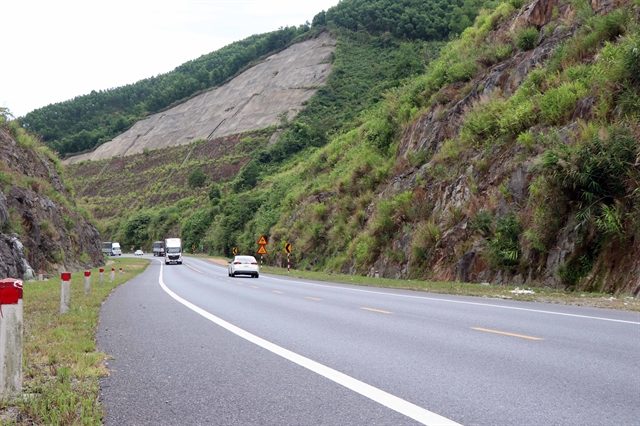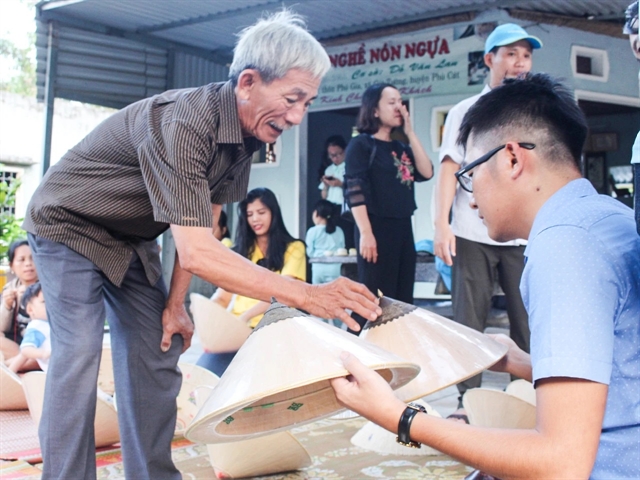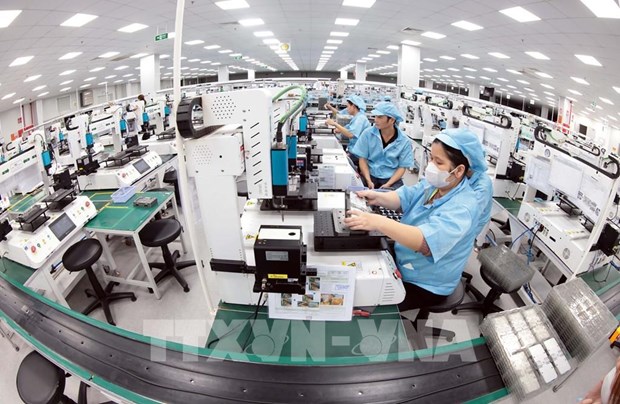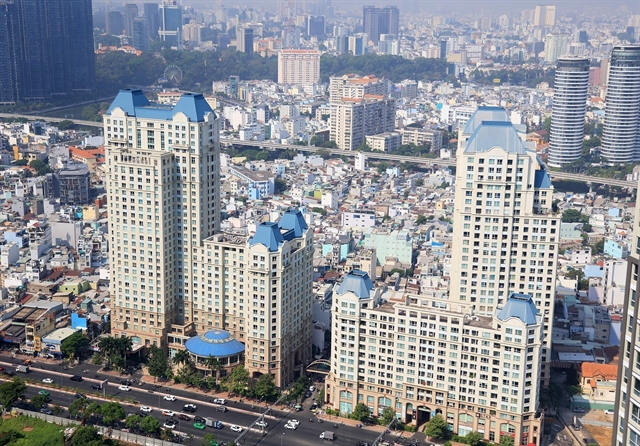 Op-Ed
Op-Ed

Imagine risking your life every day just to go to school.
If you’ve been in Viet Nam long enough, chances are that you’ve heard of all the ways many poor kids in the country, especially in remote and mountainous areas, have to take to go to school.
I want to paraphrase a quote: The measure of a nation is how its most vulnerable members are treated.
Keep that in mind.
Now imagine risking your life every day just to go to school.
If you’ve been in Việt Nam long enough, chances are that you’ve heard of the many dangerous ways that poor kids (poor as in economically disadvantaged), especially in remote and mountainous areas, take to school.
Sliding across steel cables above rivers and stepping gingerly on improvised bridges made of bamboos or trees that become slippery and exposed to flash floods in the rainy season are two of the ways.
Or maybe you’ve seen the video in which dozens of young children from grade 1 to grade 5 swim across the river in order to get to school in Điện Biên Province. In order to keep the clothes and books from getting wet, the students put them in large, tightly tied plastic bags while crossing the river almost naked.
Earlier this month, local TV stations aired a short clip of children holding on to the remnants of an old bridge as they crossed a river to get to school in Lỗ Sơn Commune, Hòa Bình Province. In the same area, pictures were also captured of parents carrying their children on their backs as they crossed the river.
The commune chairman said a provincial inspection team had concluded in 2014 that the bridge had deteriorated so badly that it needed to be replaced. The bridge was officially dismantled in 2014, but people continued to use what was left of the structure because they had no other option.
He said the dismantled bridge was in the centre of the commune and people in six villages had to use it to go to schools and access other services on the other side.
Faced with an extra hour’s walk to cross via an alternate bridge, the children have chosen to undertake the precarious crossing of the collapsed bridge instead.
The children say they have fallen down from the bridge, but they just get up and continue walking to school. It seems that it is just luck that has so far prevented more serious accidents. Getting wet is not the only danger they are exposed to when it rains and the possibility of flash floods rises.
Local authorities haven’t heard of any plan to replace or build another bridge.
In 2014, the then Minister of Transport Đinh La Thăng launched a programme to build hundreds of bridges in disadvantaged areas where local budgets couldn’t cover the costs of repair or construction. It had successfully raised fund from many firms to build bridges in the Mekong Delta. So far, it is reported that 186 bridges have been built or repaired.
The second phase of the programme, which aims to build nearly 4,000 bridges in remote areas, kicked off in August this year. A total of 3,959 bridges, including many suspension bridges, will be built in more than 5,200 communes in 450 districts located in 50 provinces and cities. Priority will be given to 63 impoverished districts.
It was a much welcomed move, and in the past two years, many new bridges have been built with donations of international organisations, private firms and philanthropic individuals.
All this does not reduce the sadness of seeing the sights mentioned earlier. There is a clear need to speed up the repair and building of bridges in the most risky areas. Our children cannot wait until 2020 for safe ways to get to school.
What’s possible
It might not be fair to compare, but it is relevant to look at Japan, where workers toiled around the clock to fill the 30mx27m, 15m deep sinkhole on a road in Fukuoka. The road reopened just a week after the accident.
And have you heard the news about Chinese engineers rebuilding a 1,300-tonne bridge in just 36 hours?
So while the central Government should do its part to hasten crucial works, local authorities cannot sit back and blame everything on budget constraints.
There are good people everywhere. A poor farmer living in a makeshift house in An Nhơn Township in Bình Định Province was willing to spend VNĐ100 million to build a bridge for the children in his village to go to school. The money had been saved for his and his wife’s funerals.
Have the local authorities who complain ever tried tapping the goodwill and resourcefulness of local residents?
Việt Nam is a country with a complicated network of rivers and streams. The number of bridges needed could be more than the 4,000 mentioned in official plans. When there is a shortage of funding, or other resources, there’s no choice but to prioritise. Obvious, right?
If millions of dollars can be spent on superhighways and fancy projects, surely the nation can afford small bridges that will help children get to school without risking their lives? Many children have quit school because it is dangerous to get there.
Meetings, anniversaries, festivals and other events are being held at the drop of a hat. Surely we can cut down on some of these and use the funds to repair or build a new bridge?
To repeat the paraphrased quote: the measure of a nation is how its most vulnerable members are treated.
We’ve not come to par. Let’s get our priorities straight first, then act on them. No more excuses. — VNS



.jpg)





